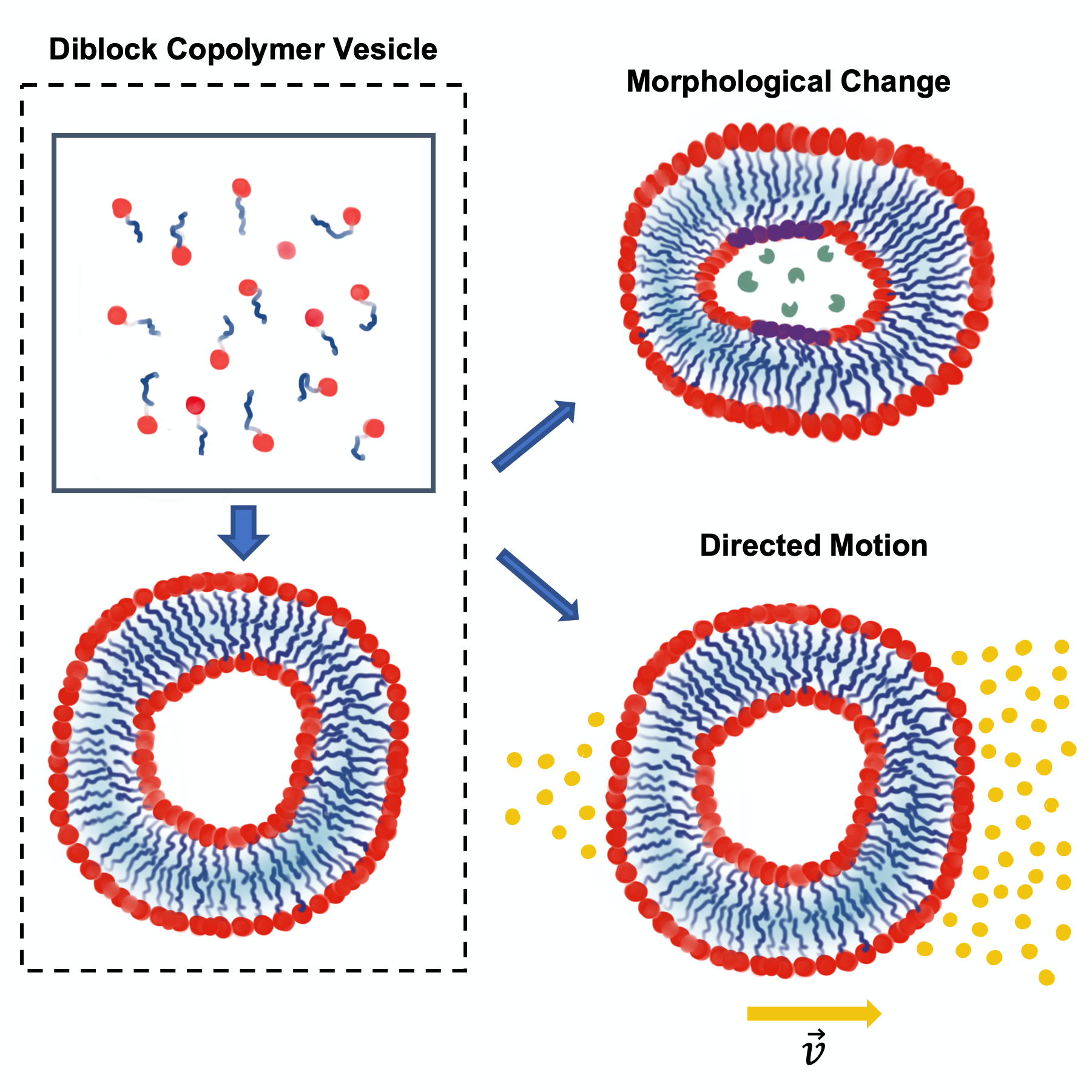Current Projects — Morphogenic engineering of block copolymers as artificial protocells

Biological cells have long been of interest to researchers due to their ability to actively control their shape. Accordingly, there is significant interest in generating simplified synthetic protocells that can alter their shape or generate self-propelled motion in response to stimuli. We propose to use a synthetic cellular system controlled by a gene regulatory network as a minimal model of a system capable of morphogenesis. To better understand the possible mechanisms of such autonomous manupilation in a popular protocell system, diblock copolymer vesicle with incorporated enzymes, we developed a reaction-diffusion model that combines Dissipative Particle Dynamics (DPD) and the Split Reactive Brownian Dynamics algorithm (SRBD), which is capable of modeling the dynamics of polymer solution as they undergo chemical reactions. Our hypothesis is that the incorporated enzyme will catalyze certain chemical reaction to induce a local concentration gradient, and the product will either interact differently with the polymer or change the chemistry of the polymer. Such concentration gradient might also induce directed motions depending on the position of the stimuli source, reaction rate, enzyme concentration, etc.
Selected Presentations
Selected Publications
| 1. Using Reactive Dissipative Particle Dynamics to Understand Local Shape Manipulation of Polymer Vesicles Q. Zhu, T. R. Scott, D. R. Tree Soft Matter. Accepted (2020). doi: 10.1039/D0SM01654C, preprint |

|
